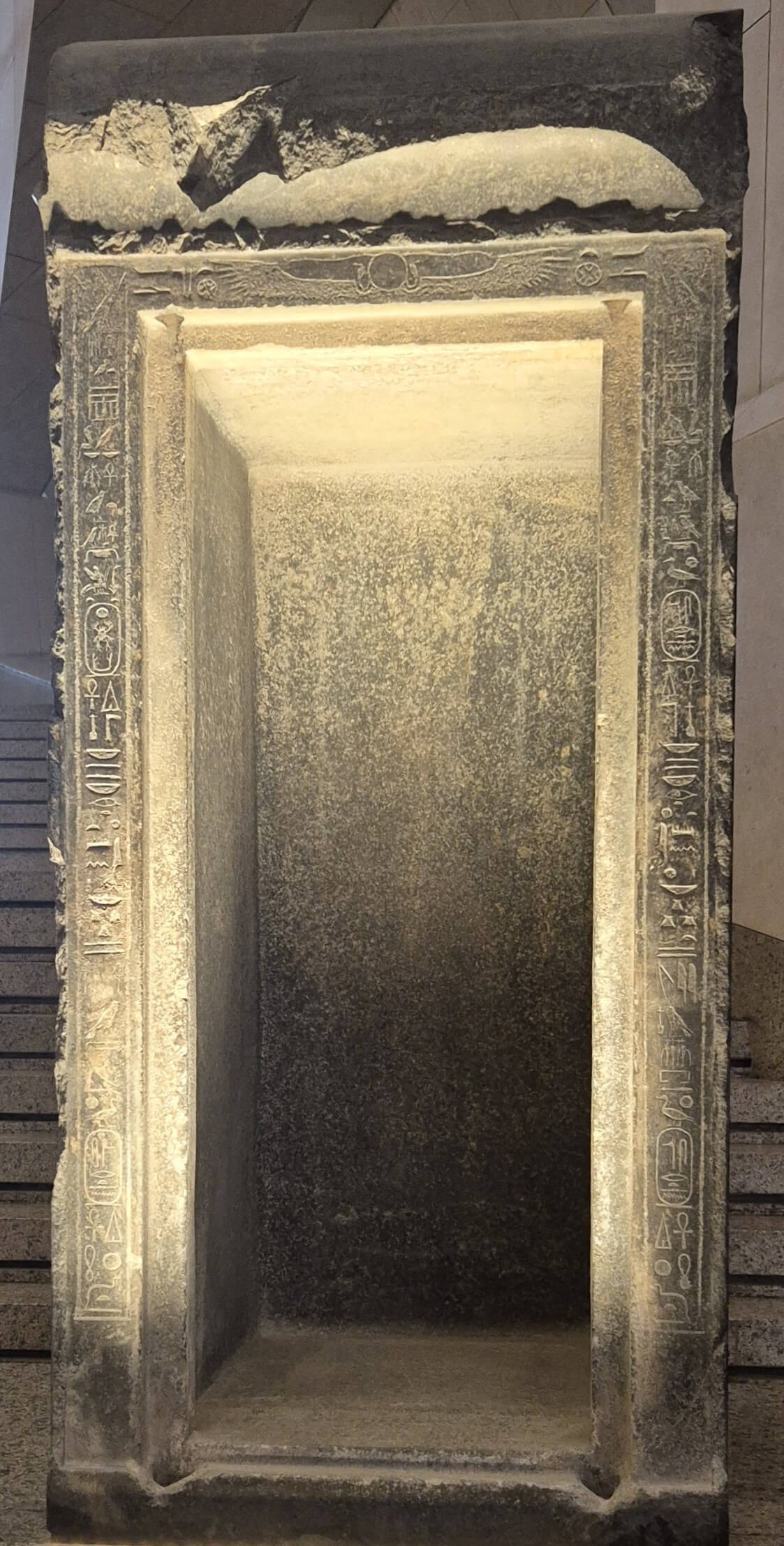
GEM 1670
Naos of King Senwosret I
This object is the Naos of King Senwosret I, one of the most powerful rulers of Egypt’s 12th Dynasty during the Middle Kingdom (c. 1956–1911 BCE). A naos is a shrine-like structure typically used to house a statue of a god in temple sanctuaries, symbolizing the divine presence. This black granite naos once belonged to the great Temple of Amun at Karnak, Egypt’s most influential religious center.
Senwosret I is remembered as a king of strength and expansion. His reign solidified Egyptian control over Nubia, especially around the strategic Second Cataract of the Nile, through a combination of military campaigns and fortress construction. These actions helped secure trade routes and valuable resources such as gold, ivory, an ... Discover more with Premium!
Unlock the Full Story of This ArtifactUpgrade to premium to access the complete description, audio guides, and exclusive content for all artifacts.Access the full audio and description for the GEM's main artifacts for only $1.99
Looking For Another Artifact ?